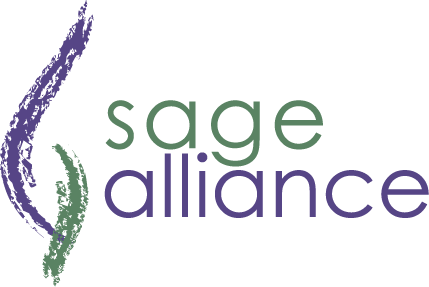Creating a Coaching Culture
A coaching culture enables managers to energize and engage their employees and optimize their performance. Coaching empowers employees to look at things from different perspectives, explore options and be decisive, especially in the presence of volatility, uncertainty, complexity and ambiguity.
The SAGE coaching methodology leverages four comprehensive steps for building a coaching culture within your organization:
Situation Analysis. Clarify the current situation and identify the individual’s challenges and obstacles. Gathering the specifics and gaining insight is helpful to ensure you are focused on the right issue or challenge. Ask questions such as; where do you need help and what’s standing in the way of success? The focus is on helping the employee gain clarity on the issue and for you to gain the needed insights.
Alternatives and Options. Explore alternatives, options and expected outcomes. In most cases, there is more than one option for solving a problem. It’s important to empower employees to think on their feet with you as the facilitator and not the problem solver. Discuss and weigh the pros and cons for each option before choosing the best course of action. When an employee reaches a stumbling block and needs your help, don’t immediately offer a solution but rather ask a question that gets them thinking. Such as; what ideas have you already thought about or what action have you already taken? This helps the employee develop the critical skills necessary for making decisions on their own.
Goal Setting. Work with the employee to outline key actions and set goals to address the challenge. This is where you take the various alternatives and options and help the employee pinpoint a course of action. Help them set SMART; Specific, Measurable, Attainable, Realistic and Time bound goals. This ensures everyone is on the same page and the goals can be achieved in a realistic timeframe.
Execution and Accountability. Formalize measurements and timing and encourage employees to take action. Empower employees to take the needed action, with your guidance and hold them accountable for following-through. Ask them what support they need from you to be successful and offer the needed encouragement along the way.
The result of a successful coaching culture equips leaders to:
• Improve problem solving and decision making skills
• Act decisively; despite (VUCA), Volatility, Uncertainty, Complexity and Ambiguity
• Take ownership and accountability
• Execute successfully
Implementing a coaching culture leads to improved productivity, increased employee engagement and overall effectiveness that helps leaders in today’s VUCA world.
Sage Alliance, a Leadership Performance Company, provides coaching, teambuilding and assessments, workshops and speaking on topics including; leadership development, empowering teams, communications, lasting impressions, personal branding and building a coaching culture for executives and high-potentials – for both team and individual leaders.
Contact us today to discover how your organization can get the most through improved productivity, efficiency and direct impact to your bottom line, while leaders gain powerful insight, crystallize opportunities for growth and fine tune their strengths, enabling them to make the greatest impact. You can contact Shelley Hammell directly at shammell@thesagealliance.com.

One thought on “Creating a Coaching Culture”
Great insights. I love the idea of coaching as part of leadership and team building. As I was looking at this I noticed how applicable this would be in the field of addictions. I am a counselor at hospital based behavioral health program. We are a team of experts, but most importantly we are an expert team. We work well together. As a result we create a climate of change where people with complex mental health and sometimes co-occurring substance use disorders are able to get better. I can see how this model would be especially be beneficial for someone who is recovering from a substance use disorder. Thanks! May God continue to bless you and your efforts.
George
Comments are closed.